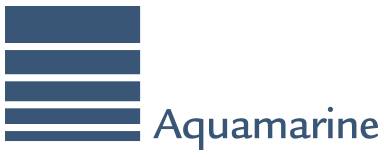DJ Credit-Card Rates Are Going Up and May Keep Rising
2016-12-16 14:30:45.480 GMT
By Peter Rudegeair and AnnaMaria Andriotis
Credit-card companies have been spending huge sums to woo consumers with
perks and rewards. Now, cardholders are about to be reminded that lenders can
dish out higher costs, too.
The annual percentage rates on millions of credit-card accounts are set to
rise following the Federal Reserve's decision on Wednesday to increase its
target short-term interest rate.
Borrowers can expect the quarter-point rate increase to pass through to
their card balances within the next two billing cycles, said Greg McBride,
chief financial analyst at Bankrate.com, a firm that tracks credit-card rates.
Card debt could grow even more expensive for consumers next year if the
Fed follows through on plans to keep moving rates higher. Lenders base the rate
they charge on credit-card balances on the "prime" rate, which generally tracks
the Fed's benchmark and rose a quarter of a percentage point to 3.75% this
week.
For many cardholders, that was likely one of the first times their rates
increased in over five years, along with an equal increase in the prime rate in
December 2015. If the prime rate were to move up a total of 1 percentage point,
the additional annual cost to consumers would be nearly $6 billion, according
to a recent report by the U.S. Consumer Financial Protection Bureau.
Since the Fed raised rates last December, interest rates on new credit
cards have increased by about half a percentage point, according to Bankrate.
Rates then were at 15.8% and averaged 16.2% as of Wednesday. (The APRs
borrowers are charged vary based on creditworthiness.)
The 2009 Credit CARD Act restricted lenders from abruptly repricing
customers' accounts based on factors like late payments. That left changes in
the prime rate as a more important variable for most card issuers, some of whom
converted their fixed-rate cards to variable.
"It was a whole different economic equation," said Henry Coffey, an
analyst at Wedbush Securities. Excluding introductory rates, almost no
consumers currently have fixed-interest-rate cards, according to data provider
WalletHub.com. In 2008 and before the recession, around a third of consumers
owned a fixed-rate card.
Some 9.3 million consumers are at risk of falling behind on credit card or
other loan payments as a result of the Fed's latest rate increase, according to
TransUnion. That figure is based on an analysis of credit reports of borrowers
who have accounts with variable interest rates and excludes those who don't
carry credit-card balances.
The CARD Act doesn't require lenders to notify borrowers if their interest
rate is rising because of an increase in the prime rate. It only requires
advance notice if they are increasing the margin that gets tacked on to the
prime rate.
The rate increase comes at a complex time for cardholders and the
industry. Credit-card default rates remain very low, though they are up from a
year prior, and income growth and low unemployment will likely help offset the
pain from the increase in card rates.
Credit-card companies, which have been trying to win clients with richer
rewards, are taking advantage of other ways to maximize revenue within the
bounds of the CFPB's rules. Last month, American Express Co. raised the fee it
charged customers who are late on more than one payment in a six-month period
to a new upper limit the CFPB allowed.
The total dollar amount of credit-card debt that consumers in the U.S. are
carrying is approaching $1 trillion — a level that was last breached in 2007.
Should rate increases continue — the Fed said this week it anticipates three
interest-rate rises next year — some analysts say delinquencies could pick up
further.
"The end of 2018 might be the time that consumers reach a breaking point,
" said Odysseas Papadimitriou, chief executive at WalletHub.com.
Write to Peter Rudegeair at [email protected] and AnnaMaria
Andriotis at [email protected]
(END) Dow Jones Newswires
December 16, 2016 09:30 ET (14:30 GMT)
Copyright (c) 2016 Dow Jones & Company, Inc.- – 09 30 AM EST 12-16-16




